Key Points
- China’s auto industry is actively combating “involution” (destructive price wars) to foster sustainable growth and innovation, aiming to prevent “involution spillover” globally.
- The anti-involution strategy is yielding strong results in H1 2025: overall production and sales exceeded 15 million units (over 10% YoY growth), and NEV penetration reached a staggering 44.3% of new vehicle sales.
- Chinese automakers exported 3.083 million vehicles in H1 2025 (up 10.4% YoY), with NEV exports rocketing up 75.2% YoY to 1.06 million units.
- Major automakers are shifting focus from discounts to technological innovation and better supply chain support, with companies like BYD (Biyadi 比亚迪) leading by example and BYD now being the top-selling automaker.
- Strategic partnerships, like that between Seres (Sailisi 赛力斯) and Huawei (Huawei 华为) for the AITO (Wenjie 问界) brand, are demonstrating significant success, with AITO (Wenjie 问界) selling over 700,000 units and outperforming luxury brands in key segments.

China’s auto industry is tackling “involution” head-on, a move that’s shaking up both domestic and global markets.
If you’re wondering what “involution” is, think of it as a brutal, zero-sum game of internal competition—specifically, the kind of cutthroat price wars that drain profits and stifle real innovation.
Now, the industry’s top players and regulators are calling for a ceasefire.
On July 11, 2025, Fu Bingfeng, a key leader at the China Association of Automobile Manufacturers (CAAM), announced that efforts to curb this destructive cycle are deepening.
The goal? To foster a healthier, more sustainable growth environment built on fairness and integrity, not just rock-bottom prices.
And it’s not just a domestic cleanup.
CAAM is also working to prevent what it calls “involution spillover”—ensuring that as Chinese automakers expand globally, they compete respectfully and follow local laws, rather than exporting chaotic price wars.
Let’s break down what this shift means and the incredible numbers backing it up.
The Stats Are In: China’s H1 2025 Auto Market is on Fire
The anti-involution strategy seems to be working wonders.
Data from the first half of 2025 shows a market that isn’t just surviving, it’s thriving.
Here are the highlights:
- Overall Market Growth: Production and sales both shot past 15 million units, a year-over-year (YoY) jump of over 10%.
- The NEV Explosion: New Energy Vehicles (NEVs) are leading the charge.
- Production hit 6.968 million units (a 41.4% YoY increase).
- Sales reached 6.937 million units (a 40.3% YoY increase).
- NEV Penetration is Sky-High: NEVs now make up 44.3% of all new vehicle sales. In June alone, that figure hit a staggering 48.6%.
- Global Ambitions: Chinese automakers exported 3.083 million vehicles in H1, up 10.4% YoY. The real story is in NEV exports, which rocketed up 75.2% YoY to 1.06 million units.
Big players like BYD (Biyadi 比亚迪), SAIC Motor (Shangqi Jituan 上汽集团), Geely Automobile (Jili Qiche 吉利汽车), Changan Automobile (Changan Qiche 长安汽车), Chery Automobile, and Great Wall Motor (Changcheng Qiche 长城汽车) collectively sold 8.79 million vehicles.
BYD (Biyadi 比亚迪) has officially taken the crown as the top-selling automaker in the country.
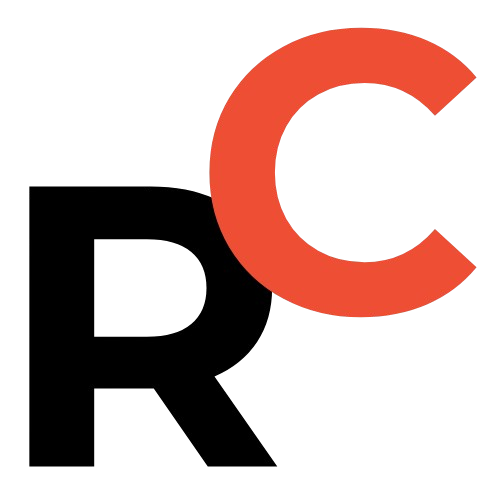
Resume Captain
Your AI Career Toolkit:
- AI Resume Optimization
- Custom Cover Letters
- LinkedIn Profile Boost
- Interview Question Prep
- Salary Negotiation Agent

From Price Cuts to Profit Growth: How Automakers Are Responding
Talk is cheap, but the actions from major automakers speak volumes.
The era of endless, aggressive discounts is winding down.
Cui Dongshu, Secretary-General of the China Passenger Car Association (CPCA), confirmed that the intensity of price reductions dropped significantly from April to June.
Here’s how the key players are changing the game:
- Ending Promotions: Companies like BYD (Biyadi 比亚迪), Geely Automobile (Jili Qiche 吉利汽车), BAIC BluePark (Beiqi Lan’gu 北汽蓝谷), and Changan Automobile (Changan Qiche 长安汽车) have all canceled recent short-term price-slashing campaigns.
- Focusing on Innovation, Not Hype: Li Yunfei, a GM at BYD, stated the company will combat involution with technological innovation, rejecting “exaggerated publicity and unsustainable marketing practices.”
- Supporting the Supply Chain: In a major move signaling industry maturity, automakers like BYD (Biyadi 比亚迪) have committed to unifying supplier payment terms to within 60 days, a huge win for smaller partners in the ecosystem.
The Power of Partnerships: The Seres, Huawei, and CATL Playbook
Nothing showcases the new strategy better than the success of Seres (Sailisi 赛力斯).
The company announced a massive profit forecast for H1 2025: between ¥2.7 billion and ¥3.2 billion RMB (approx. $378 million – $448 million USD).
How did they do it?
By teaming up with tech giant Huawei (Huawei 华为) on the AITO (Wenjie 问界) brand.
This partnership has been electric:
- Market Dominance: The AITO (Wenjie 问界) brand, powered by Huawei’s intelligent driving systems, has sold over 700,000 units in total.
- Record-Breaking Sales: In June 2025 alone, AITO (Wenjie 问界) delivered over 44,000 vehicles, a new record.
- Beating the Giants: AITO (Wenjie 问界) models are now outselling luxury giants like Mercedes-Benz, BMW, and Audi (BBA) in key market segments.
Seres (Sailisi 赛力斯) isn’t stopping there.
They’re also deepening their partnership with battery kingpin Contemporary Amperex Technology Co. Limited (CATL) (Ningde Shidai 宁德时代).
CATL (Ningde Shidai 宁德时代) just launched a high-end battery production line inside the Seres (Sailisi 赛力斯) Super Factory—an innovative “factory-in-factory” model that streamlines production for AITO (Wenjie 问界) vehicles.

It’s Not Just Cars: The Supply Chain is Cashing In
- HGTECH Profit Growth: Estimated 42% to 52% YoY jump in H1 2025 profits (sensing business).
- Key Components in Demand:
- Intelligent driving SoCs (System on a Chip)
- LiDAR
- Sensors
- Power Battery Installed Capacity: 299.6 GWh (47.3% YoY growth).
- LFP Battery Dominance: 81.4% of total capacity (73% YoY growth).
- CATL Market Share: 43.05%.
- Other Growing Battery Competitors: CALB, Gotion High-Tech.
This industry-wide shift is creating a massive ripple effect, boosting profits for the entire supply chain.
As cars get smarter, the companies making the tech inside are seeing huge growth.
Take HGTECH (Huagong Keji 华工科技), a sensing business.
They’re expecting H1 2025 profits to jump by 42% to 52%, thanks to the boom in NEVs and smart features.
One of the most exciting trends is the democratization of advanced technology.
L2++ intelligent assisted driving, once a feature for high-end luxury cars, is now breaking into the sub-¥100,000 RMB (approx. $14,000 USD) market.
This is driving insane demand for components like:
- Intelligent driving SoCs (System on a Chip)
- LiDAR
- Sensors and other related components
And of course, the battery sector is exploding.
In H1 2025:
- China’s power battery installed capacity grew 47.3% YoY to 299.6 GWh.
- Lithium Iron Phosphate (LFP) batteries are the undisputed champion, making up 81.4% of total capacity with 73% YoY growth.
- CATL (Ningde Shidai 宁德时代) remains the leader with a 43.05% market share, while competitors like CALB (Zhongchuang Hang 中创新航) and Gotion High-Tech (Guoxuan Gaoke 国轩高科) are also seeing strong growth.

Find Top Talent on China's Leading Networks
- Post Across China's Job Sites from $299 / role, or
- Hire Our Recruiting Pros from $799 / role
- Qualified Candidate Bundles
- Lower Hiring Costs by 80%+
- Expert Team Since 2014
Your First Job Post

What’s Next? A More Sustainable, Global Future
The “anti-involution” strategy is more than just a buzzword—it’s a fundamental pivot.
By moving away from self-destructive price wars, China’s auto industry is building a more resilient, innovative, and profitable future.
With continued government support, like vehicle replacement subsidies and NEV purchase tax exemptions, the momentum is set to continue.
As China’s auto industry matures beyond its internal ‘involution’, the world is witnessing the rise of a more strategic, tech-forward, and formidable competitor on the global stage.

ExpatInvest China
Grow Your RMB in China:
- Invest Your RMB Locally
- Buy & Sell Online in CN¥
- No Lock-In Periods
- English Service & Data
- Start with Only ¥1,000

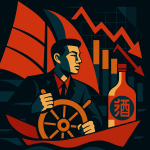
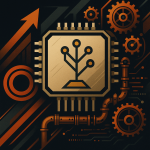
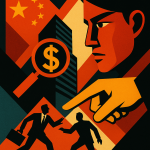
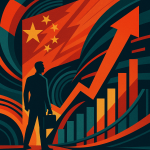
![Small Nuclear Reactors & Data Centers: Why China is Leading the Charge [FreshFromChina]](https://freshfromchina.com/wp-content/uploads/2025/05/Small-Nuclear-Reactors-Data-Centers-Why-China-is-Leading-the-Charge___FreshFromChina-150x150.png)